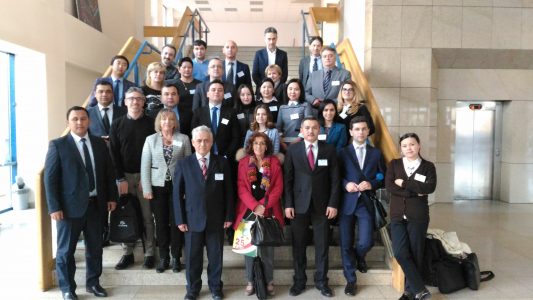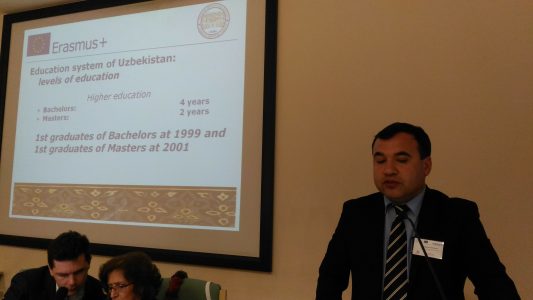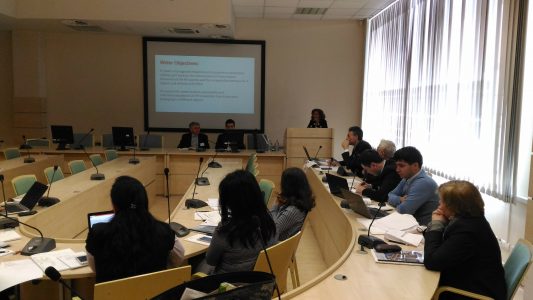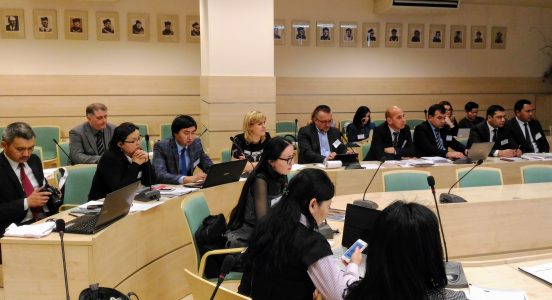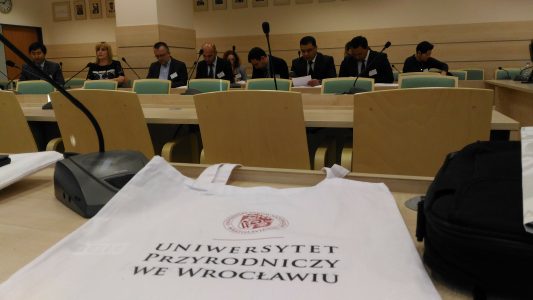Responsible partner(s): USZ (HU) and MSX (UK)
In order to provide concrete examples of correct procedures in recognition of study periods abroad, the consortium will identify 5 degree courses, jointly developed or updated during previous TEMPUS projects, on which student mobility already started within the ongoing EMA2 projects. These degree courses will be described according to the generic and specific competences and the learning outcomes that a student will acquire by means the learning units/modules and the accumulation of related credits. Students will cooperate in the definition of real workload for each Module for the correct allocation of ECTS. The comparative scheme of local credits and ECTS prepared by each partner, will facilitate the design of a complete comparative description of modules and relative credits. The first analysis of grade systems existing in the participating countries will be developed and completed by collecting data on the students’ performances in the ISCED fields identified for the experimentation. Data on the last 3 years will be collected in order to have reliable information. In order to establish a correct conversion of the grades between the various systems, this performance will be expressed in percentage according to the methodology established in the pilot project EGRACONS, considered as one key tool in the new ECTS Guide approved by Ministries of Education of EHEA (Yerevan 2015). Then, finally a complete comparative scheme of credits and grades will be finalised. This will be the base for a Manual for a transparent recognition of mobility and credit/grade transfer. The principles and rules contained in the Manual will be applied to the ongoing mobilities within EMA2 and Credit Mobility projects. The second Regional Meeting will disseminate the experience and put the basis for the development of the strategy in other degree courses and in other universities.
Activities:
- Identification of 5 fields of study and description of profiles, by general and specific LOs.
5 degree courses, among those developed or updated by the partnership during previous TEMPUS projects, will be selected as pilot examples for the development of fair and transparent recognition of credits and grades. In principle, all the PC have competences in the fields of agriculture (Agro-economy, Agro-Engineering, Agro-ecology) and environment protection (Rehabilitation of polluted soil, Water management, Management of Solid Wastes, Sustainable development) so all of them can contribute the all the pilot degrees development and description. Due to high number of partners, each of the 5 examples will be developed by one EU university and one/two universities representing the 4 regions. The final report will contain all the degrees and a complete scheme.
- Allocation of ECTS to each Module
The 5 EU-PC groups will proceed to the description of the pilot degrees courses according to skills, competences and Learning Outcomes and to the allocation of ECTS to each identified Module/learning unit. The local credits are maintained and an explanation of the correspondence with ECTS and the methodology for finding this correspondence is provided. By joining the reports of the 5 groups a complete comparison of the 5 degrees is established.
- Students’ performances for the identified fields of study in the last 3 years expressed in percentage of grades obtained.
In order to prepare a fair translation of grades acquired abroad in the local system, the 5 groups will collect data on the students’ performances in the last three years in the filed of study for which are preparing the comparison of credits. The data, expressed in percentages will allow a clear method for the translation of grades from one system to another. The resulting 5 schemes will be analysed and a comprehensive synoptic table will be prepared.
- Synoptic scheme of grade systems and Manual for the correct transfer of grades between the involved institutions
The reports prepared by the 5 groups will be analysed by the SC and a final comprehensive comparative scheme of credits and grades in the 5 degree courses will be finalised. A Manual for the correct transfer of grades and credits between the involved institutions in the pilot courses, including the synoptic scheme of grade systems is approved and published in the web site.
Documentation
Presentation during SC in Almaty (May 2018) PAWER W4 Proposal [PDF]
Matrix of topics, subjects and university partners involved (30/11/2018) PAWER WP4 Pilot Courses Matrix [PDF]
Link to the archive of pilot courses description
As part of WP4, the project outputs should include a manual for the correct transfer of grades and credits between the involved institutions in the pilot courses, including the synoptic scheme of grade systems is approved and published in the web site. After it became apparent that most of the consortium members were not members of EGRA-CONS, it was agreed that MUHEC would work with a sub-contractor to adapt its MUSKET platform to support the PAWER consortium for credit recognition and grade conversion. The MUSKET tools support these processes and can be used after the successful completion of a student mobility.
Access to Musket tool [only for partners]





